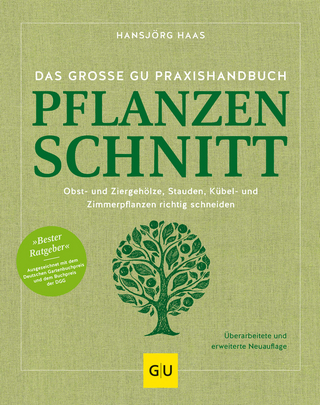
Truthlikeness
Springer (Verlag)
978-94-010-8170-2 (ISBN)
1. Distance and Similarity.- 1.1. Metric Spaces and Distances.- 1.2. Topological Spaces and Uniformities.- 1.3. Degrees of Similarity.- 1.4. The Pragmatic Relativity of Similarity Relations.- 2. Logical Tools.- 2.1. Monadic Languages NL.- 2.2. Q-Predicates.- 2.3. State Descriptions.- 2.4. Structure Descriptions.- 2.5. Monadic Constituents.- 2.6. Monadic Languages with Identity.- 2.7. Polyadic Constituents.- 2.8. Distributive Normal Forms.- 2.9. First-Order Theories.- 2.10. Inductive Logic.- 2.11. Nomic Constituents.- 3. Quantities, State Spaces, and Laws.- 3.1. Quantities and Metrization.- 3.2. From Conceptual Systems to State Spaces.- 3.3. Laws of Coexistence.- 3.4. Laws of Succession.- 3.5. Probabilistic Laws.- 4. Cognitive Problems, Truth, and Information.- 4.1. Open and Closed Questions.- 4.2. Cognitive Problems.- 4.3. Truth.- 4.4. Vagueness.- 4.5. Semantic Information.- 5. The Concept of Truthlikeness.- 5.1. Truth, Error, and Fallibilism.- 5.2. Probability and Verisimilitude.- 5.3. Approach to the Truth.- 5.4. Truth: Parts and Degrees.- 5.5. Degrees of Truth: Attempted Definitions.- 5.6. Popper’s Qualitative Theory of Truth-likeness.- 5.7. Quantitative Measures of Verisimilitude.- 6. The Similarity Approach to TruthLikeness.- 6.1. Spheres of Similarity.- 6.2. Targets.- 6.3. Distance on Cognitive Problems.- 6.4. Closeness to the Truth.- 6.5. Degrees of Truthlikeness.- 6.6. Comparison with the Tichý—Oddie Approach.- 6.7. Distance between Statements.- 6.8. Distance from Indefinite Truth.- 6.9. Cognitive Problems with False Presuppositions.- 7. Estimation of Truthlikeness.- 7.1. The Epistemic Problem of Truthlikeness.- 7.2. Estimated Degrees of Truthlikeness.- 7.3. Probable Verisimilitude.- 7.4. Errors of Observation.- 7.5. Counterfactual Presuppositions andApproximate Validity.- 8. Singular Statements.- 8.1. Simple Qualitative Singular Statements.- 8.2. Distance between State Descriptions.- 8.3. Distance between Structure Descriptions.- 8.4. Quantitative Singular Statements.- 9. Monadic Generalizations.- 9.1. Distance between Monadic Constituents.- 9.2. Monadic Constituents with Identity.- 9.3. Tichý—Oddie Distances.- 9.4. Existential and Universal Generalizations.- 9.5. Estimation Problem for Generalizations.- 10. Polyadic Theories.- 10.1. Distance between Polyadic Constituents.- 10.2. Complete Theories.- 10.3. Distance between Possible Worlds.- 10.4. First-Order Theories.- 11. Legisimilitude.- 11.1. Verisimilitude vs Legisimilitude.- 11.2. Distance between Nomic Constituents.- 11.3. Distance between Quantitative Laws.- 11.4. Approximation and Idealization.- 11.5. Probabilistic Laws.- 12. Verisimilitude as an Epistemic Utility.- 12.1. Cognitive Decision Theory.- 12.2. Epistemic Utilities: Truth, Information, and Truthlikeness.- 12.3. Comparison with Levi’s Theory.- 12.4. Theoretical and Pragmatic Preference.- 12.5. Bayesian Estimation.- 13. Objections Answered.- 13.1. Verisimilitude as a Programme.- 13.2. The Problem of Linguistic Variance.- 13.3. Progress and Incommensurability.- 13.4. Truthlikeness and Logical Pragmatics.- Notes.- Index of Names.- Index of Subjects.
| Reihe/Serie | Synthese Library ; 185 |
|---|---|
| Zusatzinfo | XVII, 525 p. |
| Verlagsort | Dordrecht |
| Sprache | englisch |
| Maße | 155 x 235 mm |
| Themenwelt | Sachbuch/Ratgeber ► Natur / Technik ► Garten |
| Geisteswissenschaften ► Philosophie ► Allgemeines / Lexika | |
| Geisteswissenschaften ► Philosophie ► Logik | |
| Geisteswissenschaften ► Sprach- / Literaturwissenschaft ► Sprachwissenschaft | |
| Mathematik / Informatik ► Mathematik ► Allgemeines / Lexika | |
| Mathematik / Informatik ► Mathematik ► Logik / Mengenlehre | |
| ISBN-10 | 94-010-8170-0 / 9401081700 |
| ISBN-13 | 978-94-010-8170-2 / 9789401081702 |
| Zustand | Neuware |
| Haben Sie eine Frage zum Produkt? |
aus dem Bereich


